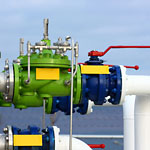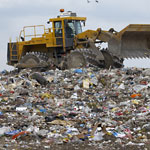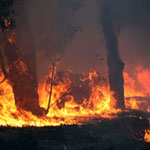| Index | Highlights | Presentation | Publications | Data | Press & Media | Images |
Global Methane Budget
Highlights
 |
Context |
After carbon dioxide (CO2), methane (CH4) is the second most important well-mixed greenhouse gas contributing to human-induced climate change. CH4 has a Global Warming Potential 86 and 28 times larger than CO2 for time horizons of 20 and 100 years. The level of CH4 in the atmosphere is two and half times higher than pre-industrial levels (cf. 1750), and it is responsible for 23% of the global warming produced by all well-mixed greenhouse gases. Methane is transformed into water vapor in the stratosphere. Methane also produces ozone in the troposphere, which is a pollutant with negative impacts on human health and ecosystems. Methane remains in the atmosphere for 9 years, as opposed to hundreds to thousands of years for carbon dioxide. |
|
 |
Global Budget |
For the decade of 2008-2017, global emissions of methane are 576 (550-594) Tg CH4 per year as estimated from atmospheric inversions (top-down approach). The global CH4 sink is 556 Tg (501-574) CH4 per year. The source–sink mismatch reflects, and is consistent with, the observed average imbalance in the atmosphere of 13 Tg (0-49) CH4 per year (the CH4 growth rate). The sum of all sources as estimated from inventories and modeling (bottom-up approaches) is 737 (594-880) Tg CH4, significantly higher than estimated from the top-down approach and reflecting the compounded uncertainties of the multiple CH4 sources. |
|
 |
Trends |
Over the past two decades, emissions from natural sources haven’t changed while emissions from human activities have increased significantly. Both emissions from agriculture, particularly livestock, and from use of fossil fuels have been responsible for the increase. Currently, both concentrations and emissions of methane are tracking emissions scenarios leading to well above the Paris Agreement temperature targets, and some datasets are tracking the warmest scenarios developed by the Intergovernmental Panel on Climate Change. |
|
 |
Anthropogenic Emissions |
About 60% of all methane emissions come from anthropogenic sources with a total of 366 (349–393) Tg CH4 (bottom-up estimates) for the decade 2008-2017. The most important sources are emissions from agriculture and waste, with enteric fermentation and manure being the most important sources. Extracting and processing fossil fuels is the second most importance source with slightly faster growth than agriculture compared to the previous decade. |
|
 |
Natural Emissions |
Natural emissions of CH4 are 371 (245–488) Tg CH4 for the decade of 2008-2017 (bottom-up estimate) and are dominated by emissions from wetlands. Freshwater bodies such as lakes and rivers account are the second most important source, followed by geological sources such as terrestrial and marine seeps and volcanoes. Other smaller sources include ruminant wild animals, termites, hydrates and permafrost. |
|
 |
Sinks |
A number of chemical and biological processes in the atmosphere and soils consume CH4 and therefore are the sinks of CH4. The primary sink is oxidation by hydroxyl radicals (OH), mostly in the troposphere, accounting for about 90% of the global methane sink. Additional sinks include methanotrophic bacteria in aerated soils, reactions with chlorine radicals and atomic oxygen radicals in the stratosphere, and reactions with chlorine radicals from sea salt in the marine boundary layer. Sinks for the 2008-2017 decade are estimated to be about 556 (501–574) Tg CH4 per year (top-down estimate). |
|
 |
Outlook |
There are opportunities and challenges ahead. The opportunity lies in the possibility of developing short-term climate change mitigation policies that take advantage of the relatively short atmospheric lifetime of CH4 of about 9 years, and the known technological and agronomical options available for reducing emissions. We found no detectable changes between the last two decades on emissions from the permafrost region. However, the continued thawing of permafrost and methane hydrates could increase CH4 emissions in the future. A better and regular quantification of the global CH4 budget and its attribution to sources and sinks is key to explore the opportunities and meeting the challenges. |
